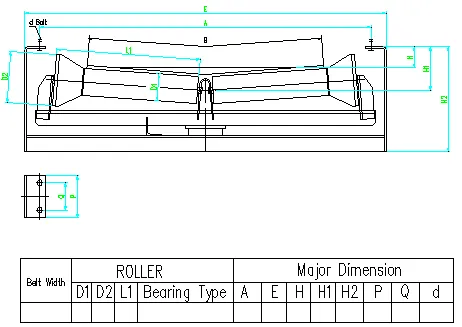 Afrikaans
Afrikaans  Albanian
Albanian  Amharic
Amharic  Arabic
Arabic  Armenian
Armenian  Azerbaijani
Azerbaijani  Basque
Basque  Belarusian
Belarusian  Bengali
Bengali  Bosnian
Bosnian  Bulgarian
Bulgarian  Catalan
Catalan  Cebuano
Cebuano  Corsican
Corsican  Croatian
Croatian  Czech
Czech  Danish
Danish  Dutch
Dutch  English
English  Esperanto
Esperanto  Estonian
Estonian  Finnish
Finnish  French
French  Frisian
Frisian  Galician
Galician  Georgian
Georgian  German
German  Greek
Greek  Gujarati
Gujarati  Haitian Creole
Haitian Creole  hausa
hausa  hawaiian
hawaiian  Hebrew
Hebrew  Hindi
Hindi  Miao
Miao  Hungarian
Hungarian  Icelandic
Icelandic  igbo
igbo  Indonesian
Indonesian  irish
irish  Italian
Italian  Japanese
Japanese  Javanese
Javanese  Kannada
Kannada  kazakh
kazakh  Khmer
Khmer  Rwandese
Rwandese  Korean
Korean  Kurdish
Kurdish  Kyrgyz
Kyrgyz  Lao
Lao  Latin
Latin  Latvian
Latvian  Lithuanian
Lithuanian  Luxembourgish
Luxembourgish  Macedonian
Macedonian  Malgashi
Malgashi  Malay
Malay  Malayalam
Malayalam  Maltese
Maltese  Maori
Maori  Marathi
Marathi  Mongolian
Mongolian  Myanmar
Myanmar  Nepali
Nepali  Norwegian
Norwegian  Norwegian
Norwegian  Occitan
Occitan  Pashto
Pashto  Persian
Persian  Polish
Polish  Portuguese
Portuguese  Punjabi
Punjabi  Romanian
Romanian  Russian
Russian  Samoan
Samoan  Scottish Gaelic
Scottish Gaelic  Serbian
Serbian  Sesotho
Sesotho  Shona
Shona  Sindhi
Sindhi  Sinhala
Sinhala  Slovak
Slovak  Slovenian
Slovenian  Somali
Somali  Spanish
Spanish  Sundanese
Sundanese  Swahili
Swahili  Swedish
Swedish  Tagalog
Tagalog  Tajik
Tajik  Tamil
Tamil  Tatar
Tatar  Telugu
Telugu  Thai
Thai  Turkish
Turkish  Turkmen
Turkmen  Ukrainian
Ukrainian  Urdu
Urdu  Uighur
Uighur  Uzbek
Uzbek  Vietnamese
Vietnamese  Welsh
Welsh  Bantu
Bantu  Yiddish
Yiddish  Yoruba
Yoruba  Zulu
Zulu Optimizing Conveyor Troughing Idler Performance for Enhanced Material Handling Efficiency
Understanding Conveyor Troughing Idlers A Key Component in Material Handling
In the realm of industrial material handling, conveyor systems play a vital role in efficiently transporting goods and raw materials across various stages of production. Among the many components that constitute these systems, conveyor troughing idlers stand out for their functional importance and design efficiency. This article delves into the purpose, construction, benefits, and applications of conveyor troughing idlers, illustrating their significance in modern industrial operations.
What Are Conveyor Troughing Idlers?
Conveyor troughing idlers are specialized rollers used in conveyor systems to support and transport materials. These idlers are designed with a trough shape, which means that the rollers are inclined at specific angles, usually around 20 to 30 degrees. This design is crucial because it helps to contain the material being transported, preventing spillage and ensuring that it moves smoothly along the conveyor belt.
Construction and Design
The construction of conveyor troughing idlers typically involves durable materials such as steel or heavy-duty polymer to withstand the rigors of material handling. The idlers consist of cylindrical rollers mounted on frames that are adjustable to accommodate different belt widths and angles. The use of sealed bearings further enhances their durability by minimizing maintenance needs and preventing contamination from dust and debris.
One of the defining features of troughing idlers is their configuration. A standard arrangement consists of three rollers set at an incline, forming a V shape. This design not only supports the weight of the conveyed material but also helps to reduce friction between the idler and the conveyor belt.
Benefits of Troughing Idlers
conveyor troughing idlers

1. Material Containment The trough design effectively keeps bulk materials contained, minimizing loss and ensuring efficient transport. This containment is particularly beneficial when dealing with fine materials, such as sand or fertilizer, which are prone to spillage.
2. Enhanced Stability The angled rollers provide a stable platform for materials, reducing the risk of misalignment and ensuring that the load remains centered on the belt during transport.
3. Reduced Wear and Tear By supporting the belt's weight more evenly and reducing friction, troughing idlers contribute to decreased wear on both the belt and the idlers themselves. This not only extends the life of the components but also results in lower maintenance costs.
4. Improved Efficiency With reduced friction and effective material containment, the overall efficiency of the conveyor system is enhanced. This leads to smoother operations and potentially increased throughput, essential for meeting production demands.
Applications
Conveyor troughing idlers are widely employed in various industries, including mining, agriculture, manufacturing, and logistics. In mining operations, for instance, they are used to transport heavy materials like coal, ore, and aggregates. In agriculture, they facilitate the movement of grain and feed products. Their versatility and adaptability make them suitable for numerous applications, from bulk material handling to package distribution.
Conclusion
Conveyor troughing idlers are indispensable components of modern material handling systems, providing critical support and efficiency in transporting goods. Their robust design, coupled with significant advantages such as material containment, stability, and improved operational efficiency, makes them a preferred choice across industries. As industries continue to evolve and seek ways to optimize their operations, the role of conveyor troughing idlers is likely to remain pivotal, ensuring that materials are transported smoothly and efficiently from one point to another. Understanding and implementing the right idler configuration can significantly impact an organization's productivity and operational success.
-
Revolutionizing Conveyor Reliability with Advanced Rubber Lagging PulleysNewsJul.22,2025
-
Powering Precision and Durability with Expert Manufacturers of Conveyor ComponentsNewsJul.22,2025
-
Optimizing Conveyor Systems with Advanced Conveyor AccessoriesNewsJul.22,2025
-
Maximize Conveyor Efficiency with Quality Conveyor Idler PulleysNewsJul.22,2025
-
Future-Proof Your Conveyor System with High-Performance Polyurethane RollerNewsJul.22,2025
-
Driving Efficiency Forward with Quality Idlers and RollersNewsJul.22,2025





























